Back to: diplosegments
Forward to: tail
Paranota
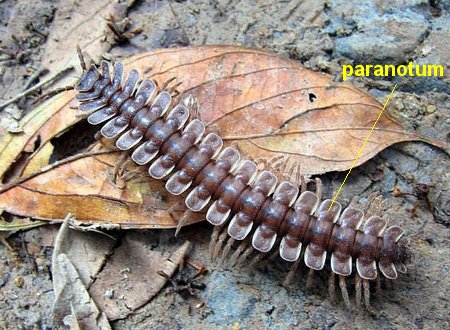
Unidentified polydesmidan, Borneo
Image © 2010 by Sophie Atkinson, used with permission
Paranota (singular paranotum) are lateral extensions of the body wall in Polydesmida. They are sometimes called 'keels'.
Some accounts of Polydesmida say that paranota help the animal to wedge itself into crevices in logs, leaf litter or soil. However, Polydesmida without paranota can wedge themselves into crevices quite easily. Paranota may be more important in defending polydesmidans: protecting the legs, and making the animal larger and less easy for a predator to grab by mouth (see the 'defensive' paranota in the image gallery below). Having wide paranota may also be a way to extend the reach of secretions from the ozopores, which usually open on the lateral (outer) margins of the paranota.
Some examples of 'defensive' paranotal shapes:
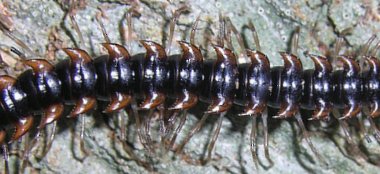 |
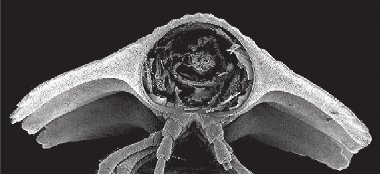 |
Unidentified polydesmidan, Panama |
Eutrichodesmus latus (Haplodesmidae), China |
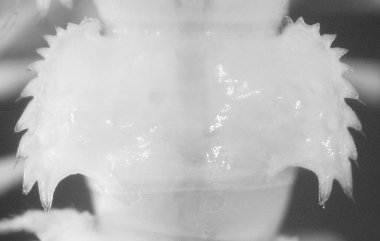 |
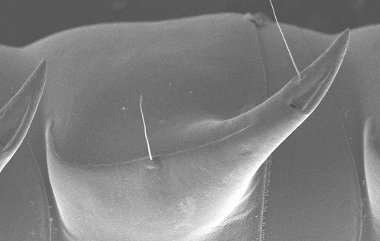 |
Atalopharetra eberhardi (Dalodesmidae), Tasmania |
Lissodesmus cornutus (Dalodesmidae), Tasmania |
The range of sizes and shapes in paranota is very large. Paranota can be wide or narrow (in the transverse direction), sweep backwards or forwards, or have the posterior corner extended as a large 'tooth'. One way to quantify 'wide' is to find the ratio of overall ring width (including the paranota) to prozonite width on a particular ring (see below).
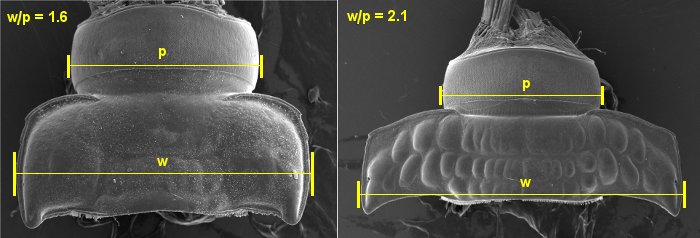
Ring 12 of two Australian Dalodesmidae:
Orthorhachis serrata, New South Wales (left)
Orthorhachis durabilis, Victoria (right)
Paranota can be set low or high (see below) or in between. Species with high-set paranota whose tops are at the same level as the metatergites are truly 'flatback' millipedes!
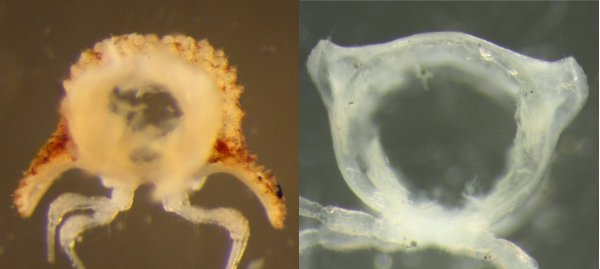
Low-set paranota (left). Anterior view of ring 6, Asphalidesmus magnus (suborder Dalodesmidea), Queensland, Australia
High-set paranota (right). Posterior view of midbody ring of cleared specimen of Lissodesmus perporosus (Dalodesmidae), Tasmania
Paranota often have marginal teeth and setae, but in many species these are gradually reduced or lost as the animal matures (see below).
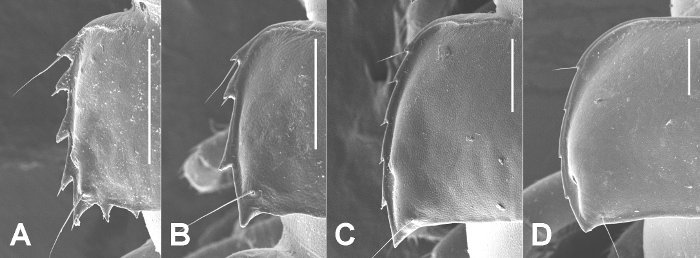
Left midbody paranota in Lissodesmus perporosus (Dalodesmidae), Tasmania.
A-D are stadia 5-8, respectively. Scale bars = 0.25 mm.
In species which have greatly reduced paranota, or no paranota at all on most rings, there are often small paranota (or traces of paranota) on the haplosegments (see images below).
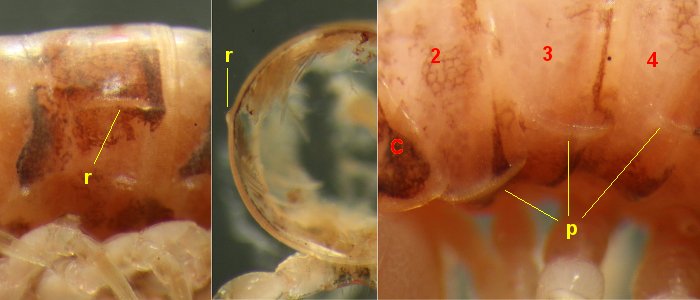
Gasterogramma psi (Dalodesmidae), Tasmania. The paranota in this species are reduced to tiny mid-lateral ridges (r) on most rings, but there are small, low paranota (p) on rings 2, 3 and 4. Left lateral (left) and posterior (centre) views of midbody ring, and left lateral view (right) of anterior rings.
Back to: diplosegments
Forward to: tail
